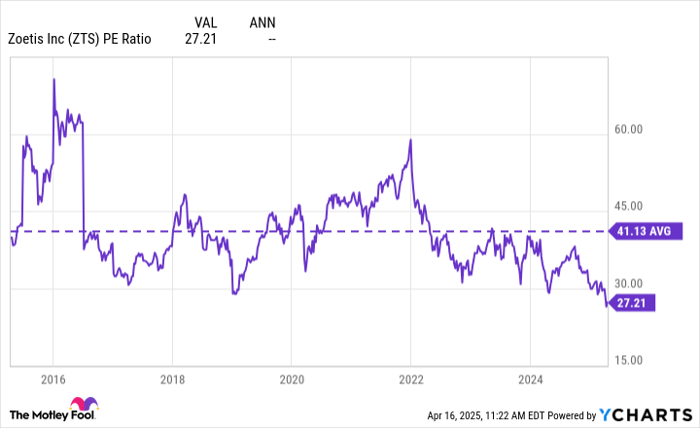Arabica and Robusta Coffee Prices Decline Amid Supply Concerns
May arabica coffee (KCK25) closed Thursday down -0.55 (-0.15%), while May ICE robusta coffee (RMK25) fell -135 (-2.51%).
Coffee prices decreased as a stronger dollar (DXY00) exerted downward pressure on the market. Additionally, increased current coffee supplies contributed to the decline. Thursday’s data showed that ICE-monitored arabica coffee inventories reached a one-month high of 795,588 bags, while ICE-monitored robusta coffee inventories climbed to a one-week high of 4,272 lots.
Recent Price Trends and Climbs
This week, coffee prices had been rising, with arabica coffee hitting a one-and-a-half-week high and robusta reaching a two-and-a-half-week high earlier in the week. Lower-than-average rainfall in Brazil raised concerns about potential coffee yield reductions. According to Somar Meteorologia, Brazil’s primary arabica coffee region, Minas Gerais, saw only 17.9 mm of rain during the week ending April 12, just 89% of the historical average.
Supply Fears Affecting Market Sentiment
Concerns about supply continue to bolster coffee prices. Cecafe reported a 26% year-over-year decline in Brazil’s green coffee exports for March, totaling 2.95 million bags. In a forecast released on January 28, Conab, Brazil’s government crop forecasting agency, predicted a 4.4% year-over-year drop in Brazil’s 2025/26 coffee output to a three-year low of 51.81 million bags. Additionally, Conab revised its 2024 Brazil coffee crop estimate down by 1.1% to 54.2 million bags, down from 54.8 million bags projected in September.
Support for coffee prices is evident as Cooxupe, the largest arabica coffee cooperative in Brazil, announced that high temperatures and deficient rainfall will likely harm coffee yields this year. As the world’s leading arabica producer, Brazil is critically impacted.
Market Concerns Driven by External Factors
Last Wednesday, arabica prices plummeted to a three-month low, primarily influenced by fears over global trade tensions. There are worries that the resulting higher tariffs could suppress coffee demand by increasing retail prices for consumers in the U.S.
Conversely, Marex Solutions predicted a global coffee surplus for the 2025/26 season, widening to 1.2 million bags, significantly greater than the 200,000 bags surplus expected for 2024/25.
Regional Production Changes and Long-Term Challenges
The growth in global supplies is particularly bearish for robusta coffee. Projections from Marex Solutions indicate that Vietnam’s 2025/26 robusta coffee production could reach 28.8 million bags, up 7.9% from a year earlier, while Brazil’s output is forecast at 25 million bags, a 13.6% increase year-over-year.
Ongoing dry El Niño conditions last year may have long-term adverse effects on coffee crops in South and Central America. Rainfall has consistently lagged behind averages in Brazil since April 2022, damaging coffee trees during vital growth stages. According to Cemaden, the natural disaster monitoring center, Brazil is presently experiencing its driest weather since 1981. Moreover, Colombia, the world’s second-largest arabica producer, is also in a slow recovery from last year’s drought conditions.
Robusta coffee is showing support due to diminished production. Issues with drought caused Vietnam’s coffee output in the 2023/24 crop year to drop by 20% to 1.472 million metric tons, marking the smallest crop in four years. The Vietnam General Statistics Office reported that 2024 coffee exports from Vietnam fell 17.1% year-over-year to 1.35 million metric tons. Additionally, the Vietnam Coffee and Cocoa Association has lowered its production estimate for 2024/25 to 26.5 million bags from a prior estimate of 28 million bags. The Vietnam Customs Department also noted a 15.3% drop in coffee exports for January through March compared to last year, totaling 495,780 metric tons, making Vietnam the leading robusta producer.
Export Dynamics and Price Forecasts
Increased global coffee exports are generally bearish for pricing, as evidenced by Conab’s report that Brazil’s coffee exports in 2024 rose 28.8% year-over-year to a record 50.5 million bags. However, the ICO indicated that global coffee exports in December fell 12.4% year-over-year to 10.73 million bags, while the total for October to December fell slightly by 0.8% year-over-year to 32.25 million bags.
USDA Reports and Future Outlook
The USDA’s biannual report from December 18 contained mixed signals for coffee prices. The USDA’s Foreign Agricultural Service (FAS) forecasted that world coffee production for 2024/25 would increase by 4.0% year-over-year to 174.855 million bags, with arabica production anticipated to rise by 1.5% to 97.845 million bags and robusta production to jump by 7.5% to 77.01 million bags. Moreover, the USDA’s FAS expects 2024/25 ending stocks to decline by 6.6% to a 25-year low of 20.867 million bags compared to 22.347 million bags in 2023/24. Additionally, the USDA’s FAS projected Brazil’s coffee production at 66.4 million metric tons, slightly below its earlier estimate of 69.9 million metric tons. Brazil’s coffee inventories are projected to fall to 1.2 million bags by the end of the 2024/25 season, reflecting a 26% year-over-year decrease.
For the 2025/26 marketing year, Volcafe adjusted its Brazil arabica production estimate down to 34.4 million bags, marking a notable drop of approximately 11 million bags from September’s estimate after drought surveys revealed more severe conditions. Volcafe also forecasts a global arabica coffee deficit of 8.5 million bags for the 2025/26 season, wider than the projected deficit of 5.5 million bags for 2024/25, signifying the fifth consecutive year of deficits.
On the date of publication, Rich Asplund did not have any positions, either directly or indirectly, in the securities mentioned in this article. All information and data in this article are solely for informational purposes. For more information, please view the Barchart Disclosure Policy.
here.
The views and opinions expressed herein are those of the author and do not necessarily reflect the views of Nasdaq, Inc.

